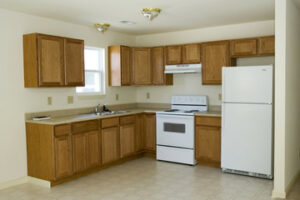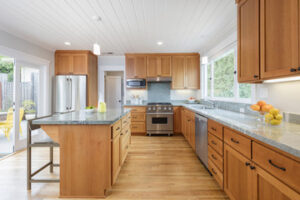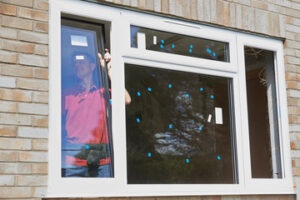A basement can be transformed into a cozy living area perfect for family gatherings, which can also increase a home’s value.
Hanging drywall, painting, closing in ductwork, and installing flooring are all tasks that fall under the remodeling category. However, refinishing the space does not include adding walls, rooms, plumbing, or changing the room’s purpose. Contact Basement Remodeling Tacoma WA now!

Basement Remodeling costs depend on what you plan to use the space for. For example, turning it into a laundry room can be fairly inexpensive if your existing plumbing is already installed, while adding a bathroom or home theater will require more expensive fixtures.
Before beginning the actual work, it’s essential that any structural issues are addressed. This may involve fixing cracks, repairing floor joists, or installing new supports. This is an important step that will prevent further damage and allow you to complete the project without unforeseen expenses.
Basement remodeling is often a lengthy process, which can take several weeks to a few months. Various factors can influence the timeline, including obtaining permits, the availability of materials, and the scheduling of subcontractors like plumbers and electricians. The duration of a basement remodel also depends on the size and complexity of the space and how much you’re planning to add or change.
Drywall and electrical upgrades are some of the most common and necessary components for a basement remodeling project. The cost of drywall can range from $3 to $15 per square foot. It’s best to choose a type of drywall that’s moisture resistant, as basements are prone to humidity.
Installing electrical wiring can also be a costly addition to a basement remodel, especially if your home isn’t already set up with electrical throughout the entire home. This can be complicated and requires the help of a licensed electrician.
Lighting is another key component that can transform a dark and dingy basement into a bright, vibrant space that you’ll love spending time in. Recessed lighting is a popular choice for highlighting cabinets, while wall sconces and accent lights can help create a cozy ambiance.
Layout
Turning a cold, unfinished basement into a living space requires careful planning. By considering how family members will use the space, you can create a design that accommodates their activities while enhancing the overall appeal of your home. A few ideas to consider include a living room, an entertainment center, a kitchenette, a bathroom, and storage.
Depending on the purpose of your basement, you may want to divide the space into separate zones, including a playroom, a home theater, a bar, a bedroom, a guest suite, or a fitness center. By doing so, you can ensure that the space is used to its full potential and not cluttered with unnecessary furniture or equipment.
Basements are usually darker than the rest of the house, so it’s important to plan for ample lighting. If you choose to add a basement bar, you’ll need to make sure that it has enough light for guests to see their drinks and food. Additionally, you should plan for a centralized sound system to allow everyone in the room to hear the music.
Many homeowners opt for open-concept designs in their finished basements. This type of layout allows for more design flexibility and can be a cost-effective way to create a spacious, welcoming addition to the home. However, it is crucial to address acoustical issues and heating challenges in order to ensure that the space is comfortable for all of its inhabitants.
If you’re looking for ways to make your finished basement feel bigger, try extending built-ins all the way to the ceiling. This will make the space feel bigger and highlight your architectural details. Similarly, you can also install long windows to draw more natural light into the basement.
Lighting
Lighting is an important element in the design of any room. In the basement, it is particularly important to consider the function and aesthetics of your lighting plan. A properly installed lighting system will enhance the beauty of the space while ensuring that you have enough light for all of your activities. In addition, you can control the mood of the room by changing the color temperature of your lights. Cooler temperatures can create a crisp, energizing feel, while warmer colors provide a cozy and inviting atmosphere.
There are many options for lighting a basement, but the most popular are recessed lights. These lights, also known as can lights, are an ideal solution for a basement because they require minimal headroom. They can be used to illuminate a whole basement or just one area. When installing recessed lighting, make sure to take into account the height of the ceiling and how far apart the lights need to be.
Another option for basement lighting is track lighting. This type of lighting consists of individual, switch-controlled lights that attach to a track. It can be used to highlight artwork, collectibles, and other decorations. It can even be used to create a more rustic or industrial look in a basement.
Accent lighting is also a good choice for the basement because it can highlight artwork or furniture. It is especially useful if you want to set a particular mood or emphasize a feature in the room. Some examples of accent lighting include rope lighting behind a bar or inside a shelving unit, wall sconces in a home theater room, and LED strip lights hung around entertainment centers.
Materials
Basement Remodeling requires a variety of materials. For example, you’ll need drywall, flooring, paint, lighting and more. It’s important to understand these costs and how they can impact your budget before starting any renovation work. This will help you avoid surprises and ensure that the finished basement meets your vision and expectations.
Flooring options include vinyl or ceramic tile, which are durable and moisture-resistant. The cost of these floors varies depending on the material and style. You’ll also need to frame walls and add a drop ceiling. The cost of these structural components varies, but typically ranges from $3 to $10 per square foot.
You may need to frame around projections like drain lines, water piping or surface mounted wires. To save time and money, you can build a frame around these features with 2x2s before adding the drywall. This will give you easy access to the utility later. It’s also a good idea to increase the spacing of your studs to 24″ for easier future wiring.
A remodeled basement can boost your home’s value and make it more appealing to prospective buyers. It can also be a refuge from the noise and distractions of city life. Many New Yorkers appreciate their basements as soundproof havens where they can relax and unwind.
A finished basement is a great place to entertain friends and family, or simply to stay warm and cozy during a cold winter. It can also be a relaxing oasis away from the constant buzz of traffic and sirens that is part of urban living. A well-designed and constructed basement can be an attractive addition to any home. The key is to plan ahead, set a goal, and find inspiration that will translate your ideas into reality.
Financing
Basement remodels add living space, improve home value, and enhance day-to-day quality of life. They can be done professionally or as a DIY project. Regardless of which type you choose, financing options are available to help homeowners complete the projects. Choosing the right financing solution depends on your individual needs, project goals, and budget.
A common way to finance a basement remodeling project is through a home equity loan or a home equity line of credit (HELOC). These loans allow homeowners to borrow against the equity in their homes, which can be used to pay for renovations. However, homeowners should note that this option is not suitable for all projects because it requires a substantial amount of equity and may increase their monthly mortgage payment.
Another option for financing a basement remodeling project is through a personal loan. These are unsecured loans that do not require any collateral and are usually offered at higher interest rates than home equity loans. However, they are a good choice for people who do not have enough equity to qualify for a home equity loan or when other types of financing are not available.
The cost of a basement remodeling project can vary considerably depending on the size and scope of the work. However, some things will always be necessary, such as addressing any foundation issues and upgrading plumbing and electrical systems. In addition, the costs will increase if you want to turn the basement into a bedroom or a kitchen.
Many contractors offer their own financing options to help homeowners fund their projects. These may include personal loans, credit cards, or lines of credit that have a low introductory rate and a longer repayment term. In addition, some lenders specialize in mortgage refinances for homeowners who are undertaking home improvement projects. The FHA 203k and Fannie Mae HomeStyle loans, for example, combine the purchase price of the home and renovation costs into one loan and offer competitive interest rates.



